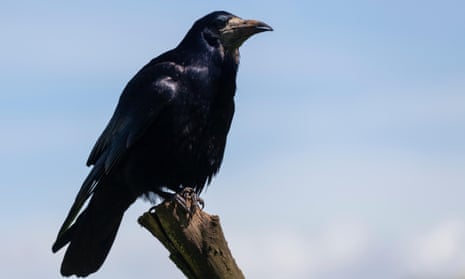The number of bird species seriously threatened in Wales has doubled in the last 20 years, with the rook, swift and greenfinch added to the red list.
A report from a coalition of conservation groups places 60 species on the red list, accounting for a quarter of the species in Wales – more than ever before.
The addition of the once common rook, beloved of artists and poets including Dylan Thomas, was a particular shock.
There has been a 63% decline in its numbers in Wales since 1995, compared with a 20% decline across the UK as a whole, with more intensive farming methods believed to be a major cause.
Thomas wrote about the rook in poems such as Being But Men: “Letting our syllables be soft/For fear of waking the rooks” and Poem In October: “With water praying and call of seagull and rook/ And the knock of sailing boats on the net webbed wall.”
Anne Brenchley, the chairperson of the Welsh Ornithological Society, said: “While it is not surprising that this latest assessment of the status of our Welsh birds continues to show that species particularly associated with farmland are still in trouble, there are some far more worrying trends. Who would have thought that familiar and widespread birds such as the greenfinch, rook and swift would now be on the red list?”
The rapid decline in numbers of breeding rooks means they have jumped from the green to the red list since the last assessment in 2016. The reduction in the number of swifts could reflect a reduced availability of nesting habitats in Wales.
The greenfinch, a once-familiar garden bird, has moved from amber to red after a population crash caused by a severe outbreak of the parasite-borne infection trichomonosis.
Since the previous assessment, the corn bunting and corn crake have been declared extinct as breeding birds in Wales.
The future of many upland, grassland and wading birds, including the curlew, redshank and lapwing, remains a concern. Work commissioned by National Resources Wales suggests breeding curlew could be on the verge of extinction in the country.
after newsletter promotion
There is some good news. The red kite, which soars magnificently among the mountains of mid-Wales, has been moved to the green list for the first time. Another species that has moved from amber to green is the avocet, which has benefited from wetland restoration.
Julian Hughes, RSPB Cymru head of species, said: “We are losing many of Wales’ most well-loved and familiar birds, underlining the seriousness of the nature emergency we face.”
